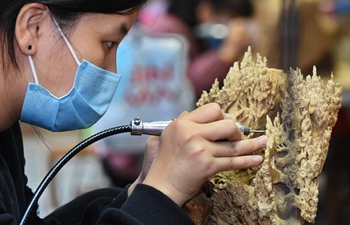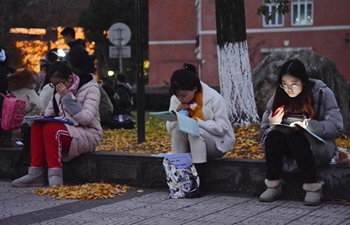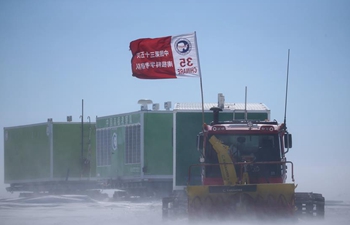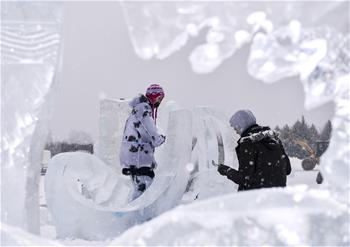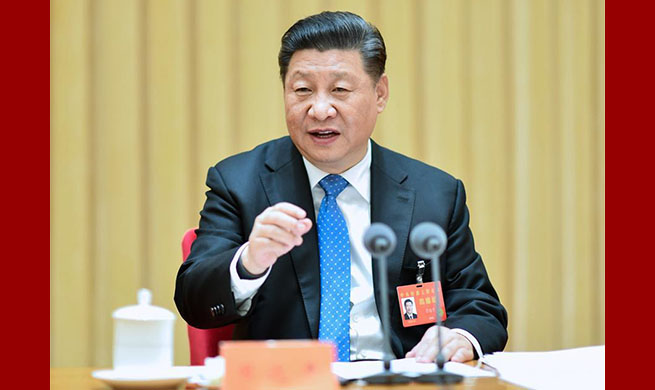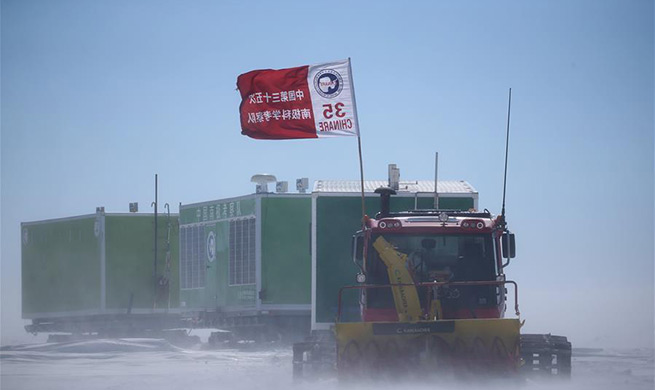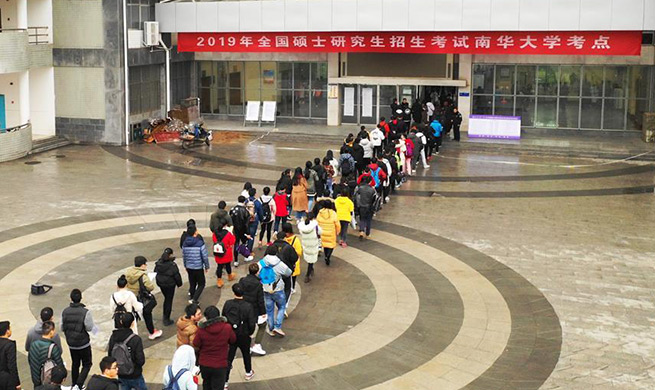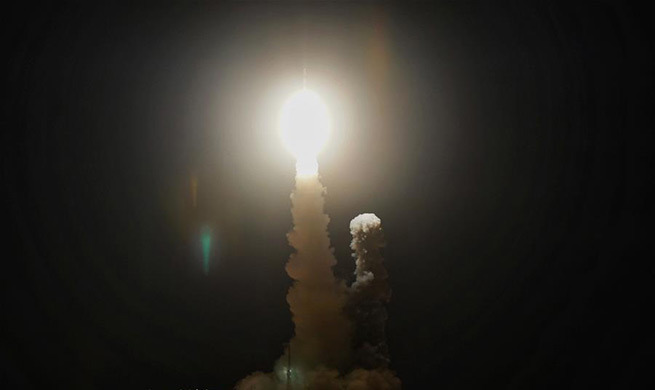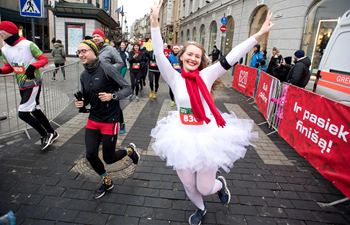BEIJING, Dec. 22 (Xinhua) -- As the first host city to fully benefit from the Olympic Agenda 2020, the Beijing 2022 Olympic and Paralympic Winter Games has this year made great strides in incorporating the new way of working spelled out by the IOC. From the earliest stages of preparations for the Games, Beijing 2022 has set a new benchmark for the Olympic movement.
Since the inception of the bid for the 2022 Games, Beijing has planned an inspired vision of a 'Joyful Rendezvous upon Pure Ice and Snow,' highlighting the three bidding concepts of hosting a Winter Games that is "athlete-centered, sustainable and economical."
These three concepts are in line with the Olympic Agenda 2020, the 40-point reform package by the International Olympic Committee (IOC) aiming to reduce the cost of bidding for and hosting the Games. Many IOC members were impressed by Beijing's bidding concepts when they chose the city as the host for the 2022 Games.
Earlier this year, the IOC announced an ambitious set of 118 reforms, focusing on six recommendations of Olympic Agenda 2020 related to the organization of the Games, and aims to ensure that the Games are affordable, beneficial and sustainable.
Beijing 2022 has focused singularly on complying with these reforms by putting on a Games that is "green, inclusive, open and clean" to honor China's commitment to host a "fantastic, extraordinary and excellent" Games.
China and the IOC's vision are perfectly lined up with one another.
IOC president Thomas Bach believes that Beijing 2022 will set a new standard for sustainability.
"The Beijing 2022 can set a new bench mark for a sustainable Olympic Games, on one hand benefiting from the legacy of the Beijing 2008 and on the other developing a new winter sports destination in a sustainable way," Bach told Xinhua at the PyeongChang Winter Games.
"There are two impressive highlights from Beijing. One is sustainability. You need to look around here at the Shougang Center, [to see] the positive effect that awarding the Olympic Games had for this area," Bach said when attending an IOC "debrief" on the PyeongChang Winter Games in June.
The debriefing was held in the Shougang Industrial Park. The Shougang Group, one of China's largest steel enterprises, was closed down in 2008 before the Olympic Games, due to concerns over air pollution at the time.
To promote the protection and utilization of the old industrial site, Beijing 2022 decided to base its head office in the Shougang Industrial Park, and now the workshops have been transformed into modern office buildings. This location, which will be the venue for the Big Air competitions in 2022, is an impressive example of urban planning and renewal.
"Chinese friends are not only talking the talk, but also walking the walk. They take sustainability really as a core issue for the organization of the Games," Bach said.
"The other is feasibility. The Organizing Committee is working with high efficiency, while making all the potential savings the Olympic Agenda 2020 is offering, and keeping the Olympic spirit alive and respecting the athlete experience," he added.
In November, with the aim of ensuring Beijing 2022 will bring long-lasting benefits to the citizens of China, the Beijing 2022 Legacy Coordination Committee was formed.
Beijing 2022 will utilize 26 competition and non-competition venues located in three clusters of downtown Beijing, Yanqing district and neighboring Zhangjiakou, Hebei province.
Among the 13 competition and non-competition venues in downtown Beijing, 11 are legacy venues from the Olympic Games Beijing 2008.
These include the iconic "Bird's Nest" National Stadium, which will be used for the opening and closing ceremonies in 2022. The Water Cube Aquatics Centre will be the curling venue. The National Indoor Stadium and Wukesong Sports Centre will host the ice hockey events, while the Capital Indoor Stadium will host figure skating and short track speed skating events. At Beijing 2022, a global audience will see this innovative reuse of existing venues from 2008.
"You are building a very intelligent Games. And this is something that not only will give you a wonderful legacy in infrastructure but also a more personal legacy for the citizens," chair of the IOC Coordination Commission for Beijing 2022 Juan Antonio Samaranch said after his visit to these venues in September.
China has announced another innovative measure to broaden the influence of the Games, encouraging 300 million people in the country to participate in winter sports. By the snow season of 2017-2018, about 17.5 million Chinese citizens were reported to have skied at least once in a year.
The Games and its education and engagement programs are expected to encourage millions more to take up winter sports. When the school year begins in September, elementary and secondary school students across China are encouraged to create their own mascots for the Games in art classes.
Beijing 2022 also promotes winter sports and benefit citizens by its use of high technology, which has been adopted in many venues. The Aquatics Centre from Beijing 2008 will be repurposed from the Water Cube to Ice Cube with a transferable rink. The National Skeleton and Luge Center has also developed a technology called "Climate Protection System" combining the landscape, racing track and sun shield roof, which will save energy and carbon emissions.
The transportation connecting three competition clusters is a priority for the organizers as Zhangjiakou is 220km away from Beijing. China now is solving the connection problem by building high-speed rail.
The high-speed railways linking Beijing and Zhangjiakou will significantly shorten the travel time from the current three hours to 50 minutes. The connection net also complies with the National Strategy of Coordinated and Integrated Development of the Beijing-Tianjin-Hebei region. It will create favorable conditions and lay a solid base for the bid for Beijing 2022, creating a "win-win" environment for future investment.
Liu Yumin, an official from the planning and construction department of the Organizing Committee said that the infrastructures such as high-speed railways are built for the city development and are excluded from the total investment of the Games.
"These facilities won't serve the Olympics directly and the related spending is excluded from the total investment," said Liu. "The infrastructure, like high-speed railways, airports, highways and some public facilities are the projects funded by government or companies for the city's development."
Beijing 2022 also embraces Olympic Agenda 2020 and by working more closely with the International Federations and former Games organizers on venue and sport delivery.
From November 2017 to March 2018, Beijing 2022 sent a total of 254 staff members to PyeongChang 2018 to get first-hand experience. 41 staff members joined a talent exchange program and were placed in key roles in the local organizing committee. 144 staff members participated in an observational capacity.
After PyeongChang 2018, Beijing 2022 began an initiative drive to establish workshops looking to explore specific areas surrounding what they saw at the Games. The discussions, consisting of 21 modules and 107 topics, focused on practical learning and nailed down the knowledge required to start preparing for the Games.
Since its launch in February 2017, Beijing 2022's marketing program has seen great success. The eight official partners to have been signed are Bank of China, Air China, Yili Group (dairy products), ANTA (sports apparel), China Unicom (telecommunication services), Shougang Group (urban regeneration services), CNPC (oil & gas), and Sinopec Group (oil & gas). Some of them were official partners of Beijing 2008.
The organizers have adopted a series of new measures to attract sponsors. China National Petroleum Corporation (CNPC) and China Petrochemical Corporation (Sinopec Group), two global energy giants, became official oil & gas partners of the Games by sharing marketing rights in the oil & gas category. Tsingtao and Yanjing have also been named the official beers in a similar arrangement.




